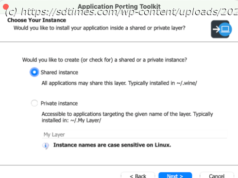If you need basic uptime and response time monitoring from basic URLs, Geckoboard is a suitable tool. But it’s designed to disseminate data, not to surface data. So if you require a system complete with rich analytics and information processing, Geckoboard isn’t right for you.
Geckoboard, which begins at $49 per month for two dashboards and one user (and rises to $399 per month for 25 dashboards and 15 users), is a website monitoring solution that has a beautiful front-end design, but falls short a bit compared to the competition because you’re not given access to very much back-end information. But what you can access is delivered in gorgeous and easily customizable charts that even a technology neophyte can understand.
Geckoboard is an ideal platform for communicating data to teams and providing that data in an easy-to-see, straightforward way. There are two use cases in which you should use Geckoboard for website monitoring: 1) If you only care about monitoring a URL for very basic, surface-level uptime data, or 2) If you already subscribe to a more robust website monitoring tool and you want to merge data from that tool with other web-based analytics tools in a more visually stimulating way. For example, Geckoboard integrates with Google Analytics and Editors’ Choice New Relic Browser, and can provide all of that data on one dashboard.
As I previously mentioned, Geckoboard begins at just $49 per month for two dashboards and one user. This is a bit misleading if you’re using the tool for anything more than uptime and page response time monitoring. If that’s all you’re looking to do with your website monitoring tool, then yes, $49 per month is what you’ll pay. However, if you’re tying more complex data from other systems such as Pingdom, you’ll need to pay for Pingdom’s service and Geckoboard simultaneously. For reference, Pingdom begins at $13.95 per month, and our other two Editors’ Choice tools, AppDynamics and SmartBear AlertSite Pro, begin at $3,300 and $199 per month, respectively.
The difference between how each system is priced can be a bit complex. AppDynamics, for example, is so expensive because it provides its users with a complete website, infrastructure, and application monitoring solution within one software suite. AppDynamics charges per licensed user because it’s designed for enterprise-wide deployment across multiple teams. Conversely, SmartBear AlertSite Pro charges based on a package deployment for up to 15 users, three endpoints, text-based notifications, and a dedicated customer service representative.
Given how little Geckoboard is attempting to accomplish as a standalone website monitoring tool, it’s almost impossible to directly compare pricing. Instead, I would compare Geckoboard to SmartBear’s AlertSite Community tool, which is a free, basic URL monitor that gives you access to five monitors for one URL. Although this may sound like a sweet deal as compared to Geckoboard, keep in mind that Geckoboard integrates with free external tools such as Facebook, Twitter, and YouTube—all of which your business is probably (or should be) using.
Think of Geckoboard as a collection of single widgets that combine to form a comprehensive dashboard. You can use Geckoboard’s custom widget application programming interfaces (APIs) to patch data through your own back-end systems or more than 60 third-party services such as Google Analytics, New Relic Browser, and Pingdom. These widgets, provided you subscribe to the third-party services, will offer you a comprehensive overview of your website and metrics, such as the number of website visitors, e-commerce transactions, uptime, downtime, average page load, Twitter mentions, YouTube comments, and other data points.
If you’re absolutely opposed to buying another solution on top of Geckoboard, you can use the software’s 15 internal custom widgets to pull in and organize a decent-sized trove of web data, including URL monitoring, mapping, and even text-based content that you can pre-establish as reminders or warnings for your team members. Each of these widgets is available on your dashboard in rows and columns. The widgets can be elongated to span multiple columns or widened to span multiple rows. You can easily click any widget to make edits, view more detailed information, remove it completely, or drag it to another position.
Because Geckoboard is designed to function as a self-service tool, you can change the color and theme to suit your own needs. Plus, you can configure your own apps, widgets, and dashboards via its open-source API to create anything that isn’t available via custom widgets or third-party integrations. Obviously, this will require someone more advanced than «Mom and Pop,» unless «Mom and Pop» met at MIT before starting their small business.
One of the coolest Geckoboard attributes is link sharing. Any Geckoboard administrator can turn dashboards and widgets into unique URLs that you can give to someone to monitor the dashboard (similar to how you would share a Google Doc). You can restrict the link, you can set up IP restrictions so only people in your office can see the dashboard, or you can go hog wild and let the whole world see how great your website is performing.
One other feature that Geckoboard has (that no other tool I’ve tested has) is the ability to run two proper standalone web monitoring tools side-by-side to determine data accuracy, data relay speed, and any other head-to-head function you can imagine. Because Geckoboard can pull in data from both systems and run them side-by-side, you can feel extra secure about how your website is running at any given moment. Keep in mind, though: This would be a very costly setup, but it could be beneficial for large organizations for which uptime is incredibly crucial, or for teams thinking of switching from Pingdom to New Relic (or vice versa).
The biggest drawback to Geckoboard is its lack of notifications. You literally have to stare at your dashboard to determine whether or not your website is failing, thriving, or something in the middle. This is a tremendous limitation, especially for users who aren’t tying Geckoboard back to third-party apps. Let’s say you’ve set up your basic website monitoring widget, you’ve finagled a custom widget by using the open-source API, and you’re monitoring everything you think you need to monitor in order to sleep well at night. Unfortunately, you’ll still have to make sure someone is staring at the dashboard at all times to respond to any issues. Unlike other systems, which will call, text, or email you when a warning is triggered, Geckoboard isn’t designed to help in this manner.






